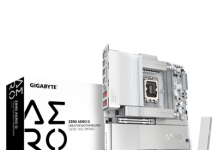Power irregularities can impact not just our quality of life, but also severely disrupt industrial operations. Resources in a factory can be rendered irrecoverable from untimely power trips, while delicate digital systems or high-speed power machinery might be damaged when power is abruptly lost.
Keeping the power supply stable is hence vital not only for productivity but to ensure that costs around unscheduled repairs and production losses are kept in check.

Finding the Right UPS
The answer to this would be the use of an uninterruptible power supply (UPS) solution to furnish emergency power, according to Kavita Manral of Schneider Electric. This is an electrical apparatus that provides emergency power should the mains power fail, typically taking over within a split second to keep electrical systems operating without interruption.
Depending on its sophistication, a UPS is capable of not only supporting IT infrastructure and machinery but can also ensure that power is regulated from period voltage fluctuations. The latter is insidious and can significantly affect the lifespan of sensitive appliances or systems.
Of course, the ideal UPS for a data centre is very different from that of a commercial facility or a factory. For instance, UPS protecting the signalling and track monitoring subsystems in a mass rapid transit system would be subjected to significant vibration and noise around the clock, including grit and dust kicked up by high-speed train carriages. Ruggedized systems with heavy-duty dust filters are a must in such scenarios.
UPS used in a manufacturing environment might not be as rugged. However, their delicate electronics do need to be protected against the high levels of humidity found in tropical locations such as Singapore and large swathes of Southeast Asia.

Features to Consider
While a home or office deployment for desktops and networking equipment can rely on APC by Schneider Electric solutions for reliable backup power, industrialised systems or critical infrastructure require far more powerful systems designed for high loads levels.
An example would be the Schneider Electric Galaxy VS 3-phase Uninterruptible Power Supply (UPS). Equipped with internal smart battery modules that extends from 10 to 100kW for large-scale workloads, it also incorporates internal N+1 redundancy. Together, these improvements deliver a 10-fold improvement in system availability.
Having a modern architecture makes a difference, too. This includes support for a modular architecture that allows worn components to be easily upgraded or replaced. Specifically, critical systems components should be implemented as modules that can be easily replaced without powering down everything. Easier serviceability translates to fewer downtimes and heightened reliability, a must for modern 24/7 operating environments.
Finally, cloud connectivity is an increasingly important consideration. For example, the cloud-based Schneider Electric EcoStruxure platform supports vendor-neutral software and services that make it significantly easier to remote track assets for around-the-clock monitoring. With data-driven insights, businesses can benchmark their systems against peers in their industry or across the board.
You can check out Schneider Electric’s Secure Power Industrial Selector here, or find out more about EcoStruxure here.








